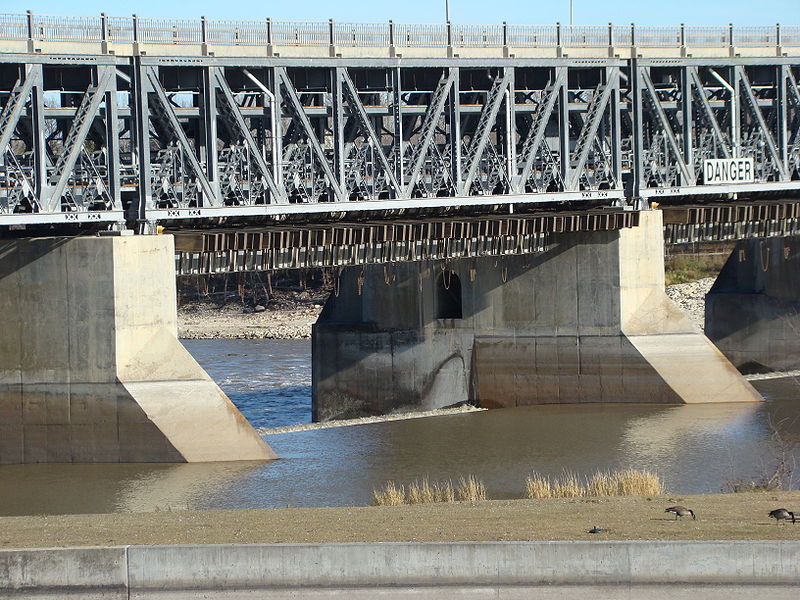Living in Manitoba it is nearly impossible to survive through the winter without the resources of Manitoba Hydro. Yet consumers may soon find that what they are paying the company to provide for these services has gone up, according to an announcement recently made by Manitoba Hydro.
The first of several rate increases, which became effective on May 1, was implemented in order to help finance the company’s plans to significantly increase its hydroelectric generating and transmission assets.
With the support of the NDP government, the plan will involve the building of multiple hydro dams, financed by rate increases of approximately four per cent annually for all hydro customers over the next 10 to 20 years. The total cost of this plan, according to Colin Craig of the Canadian Taxpayers Federation, would amount to about $34 billion, more than the current provincial debt.
While many applaud the move toward a perceivably more eco-friendly source of energy, others, like Craig, point to the high-risk nature of the plan as being a sign that it needs further review. In order for the motion to be successful, Hydro would have to be able to sell large quantities of hydroelectricity to the United States, something that cannot be guaranteed given the abundant sources of energy already present within the country, particularly in the form of recently discovered shale gas.
Critics say that if the company were unable to sell the energy, utility rates would increase by far more than four per cent, putting significant strain on Manitoba families. Furthermore, they say that the emphasis on new hydroelectric power generation ignores the benefits of using natural gas to create electricity, a resource present in significant amounts in Canada, and which Manitoba’s infrastructure could accommodate.
Natural gas is significantly cheaper in North America than virtually anywhere else in the world due to its abundance. According to a 2012 report by the Economist, “gas is the only fossil fuel set to increase its share of energy demand in the years to come.”
The same report noted, “only half a decade ago it looked as though the world might have only 50 or 60 years-worth of gas. Now shale and other unconventional as well as new conventional gas finds have increased that period to 200 years or more.”
The process of generating electricity from gas is also more environmentally friendly than doing so from coal, releasing 50 per cent less carbon dioxide.
Furthermore, hydroelectricity critics draw parallels between the potential Manitoba expansion and that which has been taking place in the European Union (EU), a transition that invoked an unprecedented blow to the European economy, and resulted in what was ultimately a very small reduction of carbon output.
Germany, for example, underwent a massive greenhouse gas transformation, which has now led to it running on an almost entirely renewable energy system. That transformation, however, came at what will ultimately be an EU $1 trillion cost by 2020.
Throughout the EU there are countries that tell a similar tale, which has helped to put 27 million people out of work, and place numerous countries on the verge of bankruptcy. With the once-stable utility boards investments now falling apart, things like pension funds, being bound up financially with said investments. are in jeopardy.
What’s more is that through all of this, carbon emissions have remained virtually unchanged. According to the International Energy Agency (IEA), “56.7 tonnes of carbon were emitted for each unit of energy produced around the world in 2010 compared with 57.1 tonnes in 1990.” Furthermore, the IEA has said that unless the governments spend billions more, carbon-based energy sources will remain dominant globally.
What it comes down to is a choice that Manitobans have to make. Are we willing to pay more now for clean energy that we won’t see for years? Do we see ourselves as fundamentally different from the EU, and able to avoid a similar economic downturn? Is it worth taking a chance that places our economy at risk on the bet that the U.S. will purchase our energy over what’s in their backyards?




Maybe you should reconsider your sources next time. Instead of citing a lobbyist, try doing some research into the costs that are publicly list on the PUB website. You’ll also learn that the plan has several variations, including natural gas plants. Pretty sloppy for the Manitoban.
Heather, the Hydro plan wrongly does not include natural gas plants and the cost cited is from Hydro’s submission to the PUB.